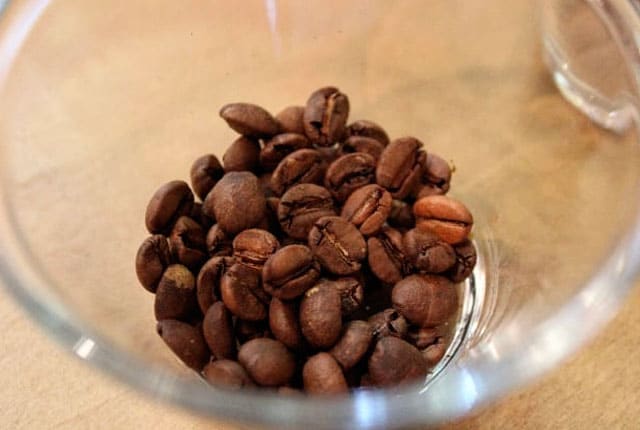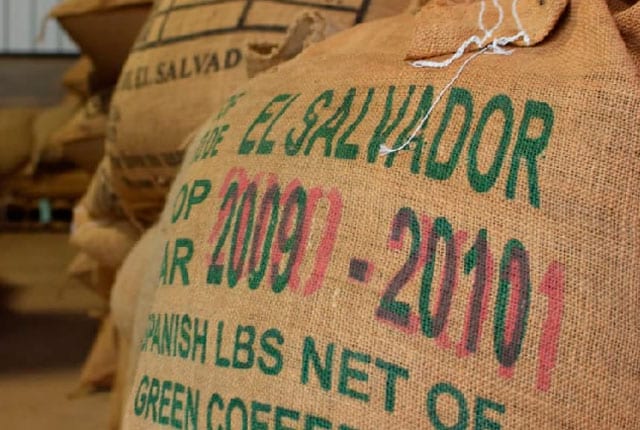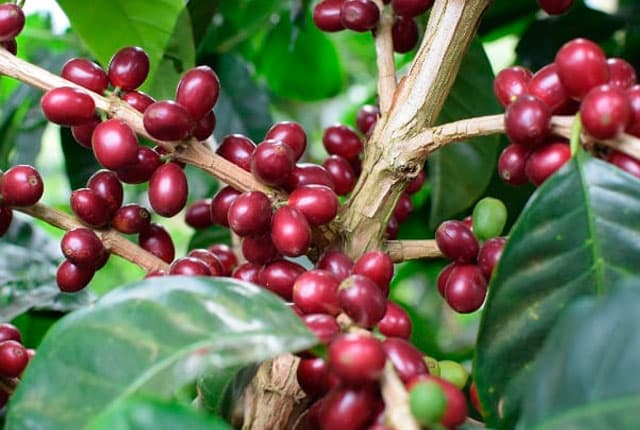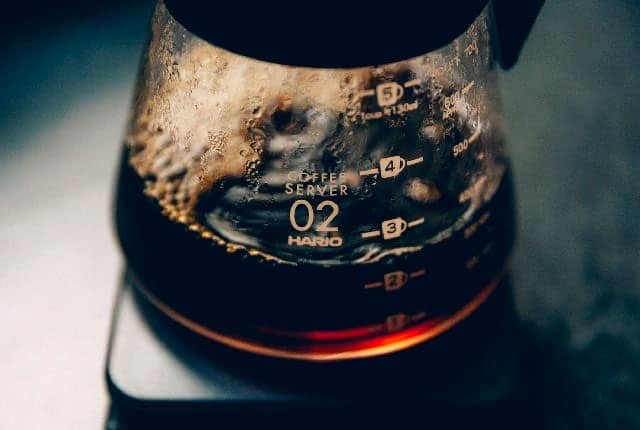
Do you have a go-to brewing method that you use every time? A standard order at your local coffee shop? Many of us decide on a type of coffee we like and stick to it. But maybe it’s time to switch it up and become more adventurous.
Whether you start experimenting with brewing variables, exploring new origins, or completely change your preparation technique, there are many different ways to rethink your coffee experience.
Why Become More Adventurous With Your Coffee?
Like other foods and drinks, coffee isn’t just one homogenous product. Would you group all wines together? How about every kind of cheese? Coffee has a wide variety in flavor and trying different ones can open up a world of new sensory experiences.
Trying different types of coffee can also help you develop a more nuanced palate, which will help you better identify which features you like and dislike. It may also allow you to better understand descriptions on bags of coffee and in cafés.

A cup of black coffee. Credit: Julio Guevara
Where To Start
It can be overwhelming to look at all the coffee on offer in a specialty café or to consider which to buy from a roaster. But don’t be afraid to ask for help. Baristas and roasters usually want to share their knowledge and can advise on which beans to try.
Veronica Belchior holds a PhD in the relationship between coffee flavor and chemistry and is a certified Q-grader. She tells me, “I think we learn how to taste coffee by getting in touch with coffee people and trying coffees from different regions, roasters, and methods.”
It’s useful to take suggestions from experienced coffee professionals, but you should also learn about the variables that influence the taste of your coffee.

A cappuccino with latte art. Credit: Miguel Regalado
- Roast Profile
André Eiermann is the Marketing Director of UCC Coffee Switzerland and 2017 Swiss Barista Champion. He says, “When you start drinking coffee, you usually drink a blend, which probably has a dark roast, so the aroma and the flavor profile are not that different from one coffee to another.”
In general, light roasts have the brightest, most acidic flavours, while medium ones are more balanced and smooth. Dark roasts are overwhelmed by the taste of the roasting process.
André suggests slowly moving towards lighter roasts, which will allow you to experience more of the unique characteristics of each coffee.

Roasted coffee beans. Credit: Julio Guevara
- Processing Method
After coffee is harvested, it’s processed. In simple terms, this is just the way the coffee bean is removed from the cherry and dried. But there are many different methods and they can make a big difference to the final cup.
Washed or wet processed coffees are often described as clean, have a light body, and feature bright acidity and floral or fruit flavors.
Natural processed coffees tend to have a low acidity, rich body, and sweet, fruity flavors.
Honey processed coffees tend to have more body than those processed using other methods and have intense sweet notes of ripe fruit and honey.

But not all coffees processed in the same way will taste identical. Variety, origin, and brewing method also have an impact on profile.
Honey and washed processed beans. Credit: Julio Guevara
- Variety & Origin
Different varieties of coffee have different chemical components, which means they have different flavor- and aroma-producing qualities. So some varieties have a reputation for a certain flavor and quality. This is why you may hear some coffee lovers get excited about a Geisha/Gesha being available in their local café or see some people always choose a Bourbon from their roaster.
Not all examples of a variety taste the same, just like not all Chardonnays or Cheddars taste alike. But in general terms, Typicas are known for a clean acidity, Bourbons for sweetness, and Geisha/Gesha for tea-like, floral notes.

Bags of green coffee from El Salvador. Credit: Fernando Pocasangre
Different growing environments also influence the chemistry, and therefore the taste, of coffee. Environmental conditions including local climate and altitude play a part. Not all coffees from one region will taste identical but there are defining characteristics of different origins.
André advises starting with coffees from Central and South America. Coffees from this region tend to be well-balanced so they’re not too overwhelming. You could also try different options from Brazil, which is known to produce coffees with chocolate and hazelnut notes.
Coffees from East Africa tend to be clean, juicy, and fruity. Some regions lean more towards sweetness (like Burundi), while others are more acidic (like Kenya). Indonesia is often known for its heavy body and earthy tones.

Ripe coffee cherries at a farm in El Salvador. Credit: Fernando Pocasangre
- Brewing Method
The way you prepare coffee can highlight the flavor characteristics of the variety, origin, or processing technique. Many specialty coffee lovers choose to use the pour over method, which allows the individual qualities of light roasts to shine.
André says that “it’s better to make filter coffee to explore new flavors.” He also highlights that espresso can be a poor choice if you’re trying to develop your palate and learn more about coffee. “Espresso is difficult to taste for many people, because espresso is short and very intense,” he says.
There are many variables within each brewing method, including grind size, water temperature, and pouring technique. If it seems like too much work to brew yourself, try ordering different coffees prepared as pour overs in a third wave coffee shop and comparing them.

Coffee being brewed in a Kalita Wave. Credit: Miguel Regalado
How To Develop Your Palate
Drinking a wide range of coffees from different regions will help you start to identify different notes and learn what flavors you enjoy. Go to cuppings, try different origins in a coffee shop, and ask the barista for new ideas. Keep notes to learn what origins and profiles you enjoy.
Veronica says, “It’s always a process. We should pay attention to our preferences. Sometimes a person likes sweeter notes more than fruity coffees. Some people love acidity. Everyone should first understand the different profiles and then starting improving their palate.”

A carafe of coffee. Credit: Coffee and I
There are some techniques that you can use to improve your sensitivity and understand what to look for when drinking or cupping coffee. Taste a variety of fruits and pay attention to the different acidities and sweetnesses. Some coffee professionals also use candy in the same exercise.
You can also create specific solutions of salt and sugars to make you aware of different flavors. Sample them and take note of what each one tastes and feels like. The SCA Sensory Foundation Course recommends the following recipes:
- Sweet: 24 g sucrose per litre of water
- Sour: 1.2 g citric acid per litre of water
- Salty: 4 g NaCl (salt) per litre of water
- Bitter: 0.54 g caffeine per litre of water
- Umami: 2 g monosodium glutamate per litre of water

A cup of black coffee and the coffee flavor wheel. Credit: Ana Valencia
Perhaps you’ve started to develop more sensitivity to different coffees and recognize differences in flavor or aroma, but can’t articulate them. There are some professional resources that can make it easier to communicate with baristas, roasters, and other coffee lovers.
World Coffee Research (WCR)’s Sensory Lexicon is a useful free resource that will help you better communicate what you experience in your cup. The Coffee Taster’s Flavor Wheel is based on the same information.

Cupping coffees. Credit: Julio Guevara
The world of specialty coffee may seem intimidating or overwhelming. With thousands of different coffees on offer, it’s no wonder you may want to stick to what you know. But by trying different coffees, you can become a more informed consumer. You may also find your perfect coffee for each occasion. So don’t be afraid – see if your local roaster has public cuppings or head to a third wave coffee shop and ask the barista for some suggestions.
Written by Luis Armijos.
Original post made by : https://perfectdailygrind.com/
